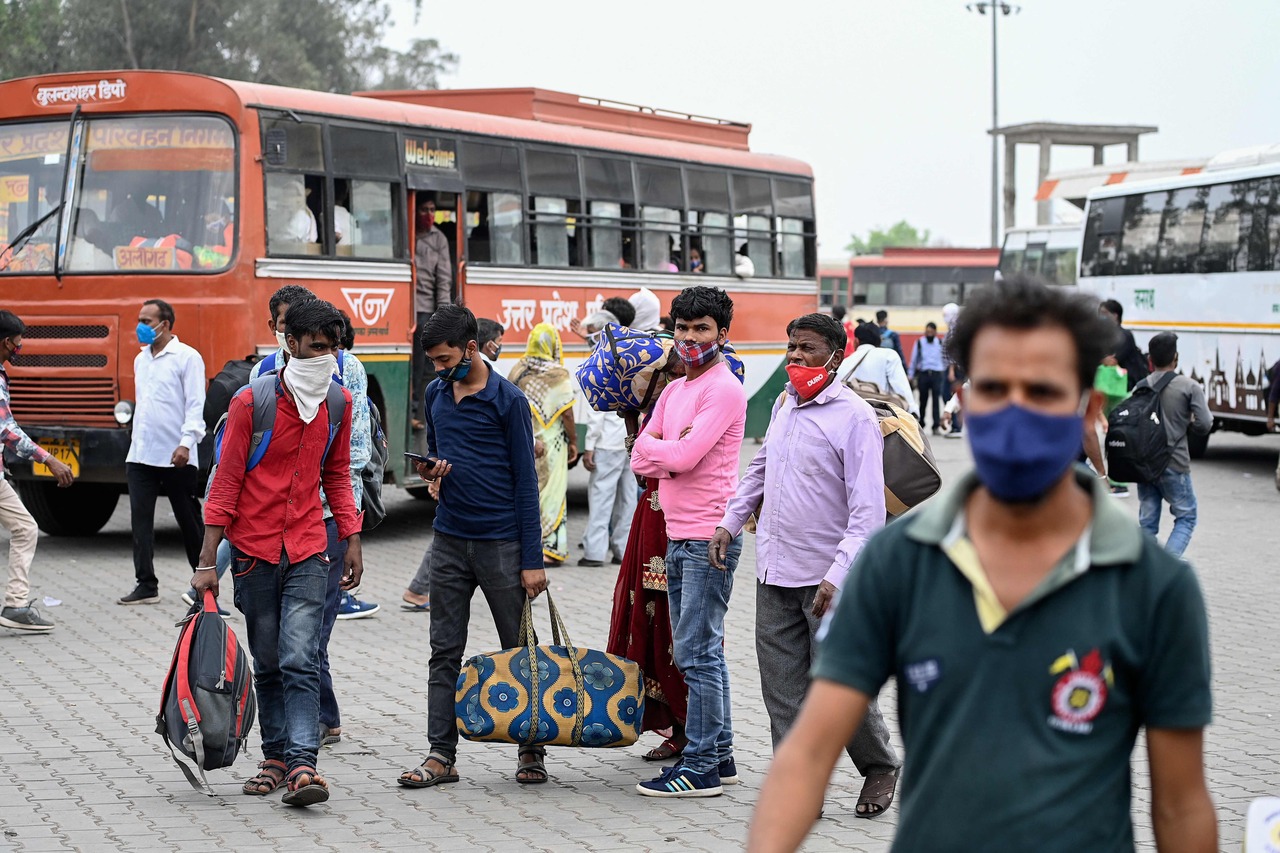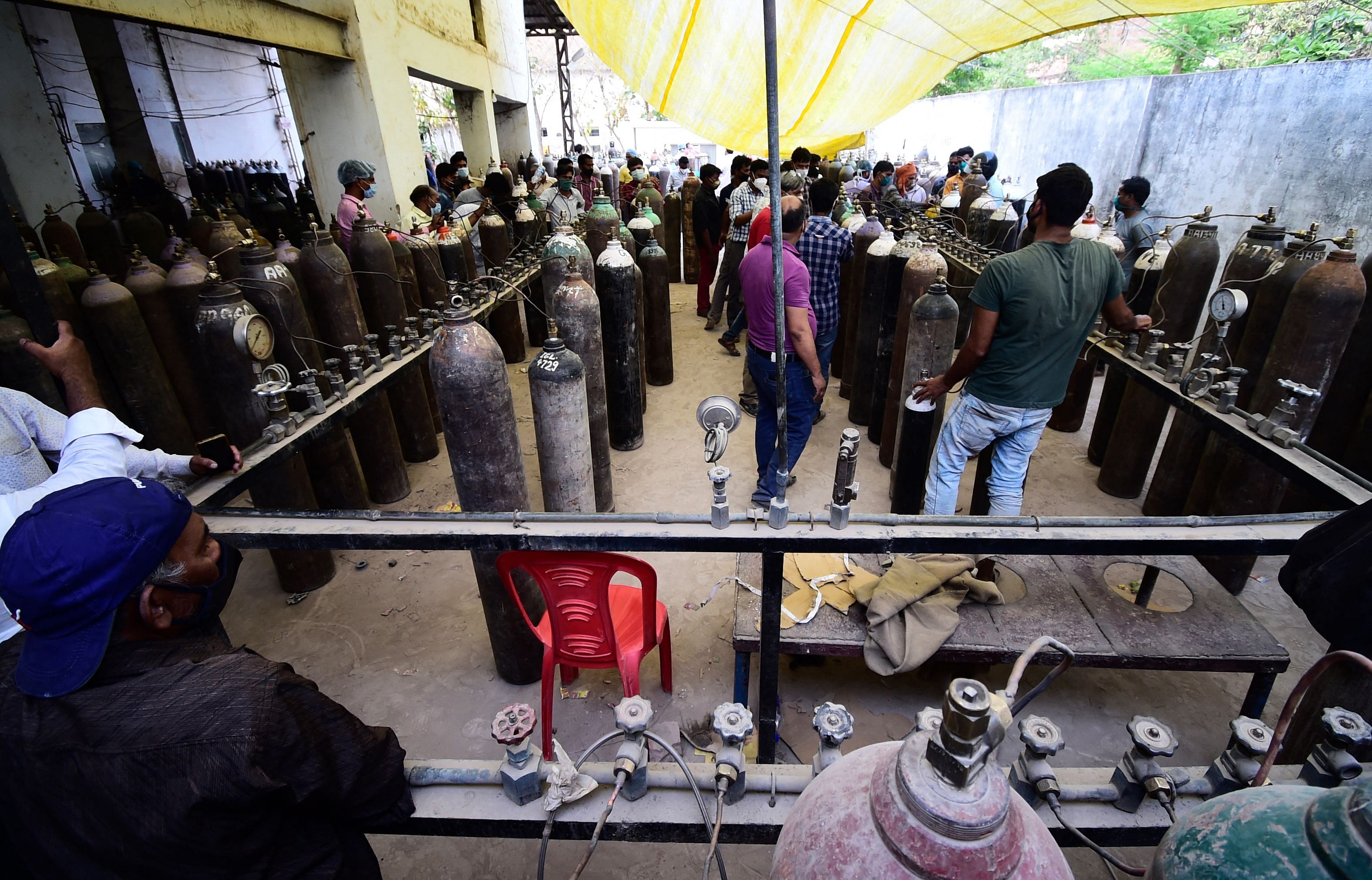'Double mutant' Covid-19 strain raises concerns in India
Sign up now: Get insights on Asia's fast-moving developments

India has been reporting more than 200,000 Covid-19 cases daily for six consecutive days since April 15.
PHOTO: AFP
Follow topic:
NEW DELHI - More countries are snapping travel links with India as it records a devastating and unprecedented spike in new coronavirus infections.
The United States and Britain placed travel restrictions on India on Monday (April 19), with the US advising travellers against heading to the South Asian country even if they are fully vaccinated against Covid-19.
Hong Kong has already banned flights from India for two weeks beginning on Tuesday and New Zealand has an ongoing suspension on travel from India, including on its own citizens, until April 28.
Singapore also said on Tuesday it is reducing with immediate effect the number of entry approvals for those who are not Singapore citizens or permanent residents, but have recent travel history to India.
India has been reporting more than 200,000 Covid-19 cases daily for six consecutive days since April 15 - its highest single-day tally was on Monday (273,810) - in a worrying spike that has likely been fuelled by a potentially new virulent coronavirus variant.
The B.1.617 variant, which carries several mutations, has been dubbed a "double mutant" because of two key mutations on the coronavirus' spike protein, which it uses to bind more effectively with cells and cause infection.
While the L452R mutation is known to increase viral transmission and reduce antibody efficacy, the E484Q mutation is said to give the virus increased cell-binding and immune-evasion properties.
The strain has already been detected in at least 16 countries, including Singapore and Britain.
Dr Maria Van Kerkhove, the World Health Organisation's (WHO) technical lead officer on Covid-19, told reporters last week it is a "variant of interest" that the WHO is tracking. "Having two of these mutations, which have been seen in other variants around the world, are concerning," she added.
The role of this variant in the fresh surge in India has not been scientifically established but its prevalence has been creeping up in sequenced samples. A government statement on March 24 stated that 15 per cent to 20 per cent of these had the B.1.617 variant, an increase compared with December. However, it did not specify what the prevalence rate was then for this strain.
"It is certainly the case that the proportion of double variant is gradually increasing. That is why it is a variant of concern, that it is spreading faster," Dr Rakesh Kumar Mishra, director of the Hyderabad-based Centre for Cellular & Molecular Biology (CCMB), told The Straits Times. He said the strain, however, is "probably not" a source of concern when it comes to beating vaccine-induced immunity or causing greater mortality. "But that needs to be studied properly," he added.
The CCMB is currently studying the virus strain to determine if it has the potential to cause re-infection or beat vaccine-induced immunity, among other fields of inquiry. While results are not expected in another two weeks, the emergence of B.1.617 and its spread underscores the continuing threat of worrying mutant variants emerging in India, which has the second-highest number of active cases after the US.
Dr Mishra said while the strain does not seem to have "too many bad clinical features", such as high mortality, its capability to spread "more smartly", amid lax Covid-related behaviour, could result in the emergence of another more lethal strain. "A new variant may emerge on top of this variant and that might be trouble," he added.
It was in February this year that a team of scientists in India at the National Centre for Disease Control and Institute of Genomics and Integrative Biology (IGIB) noted the presence of the potentially important L452R and E484Q mutations in the strain while analysing data from sequenced samples from Maharashtra.
They flagged it as a "variant of interest" as its prevalence began rising in Maharashtra, India's worst-hit state, and it showed up in other states. Dr Anurag Agrawal, IGIB's director, told ST the B.1.617 strain "appears to have" spread fast like the B.1.1.7 British strain that dominates positive "variants of concern" samples analysed so far in India.
He said while the B.1.617 is "probably less spreading" than the British variant, it may be more capable of beating immunity, adding that ongoing studies will throw greater light on the strain.

People refill medical oxygen cylinders for Covid-19 patients at an oxygen refill station in Allahabad, India, on April 20, 2021.
PHOTO: AFP
But "while B.1.617 does not increase mortality, it can overload your health infrastructure and then cause preventable deaths", he added, saying this was speculation and ongoing studies will throw greater light on the strain.
The second wave in India has been characterised by greater breathlessness among patients, leading to a greater need for medical oxygen. It is not known if this is an impact of the new strain. The Indian Ministry of Health and Family Welfare acknowledged the "double mutant" strain's presence in March but added on April 16 that the variant's higher transmissibility had not been established.
The strain has also not been termed a variant of concern by the government and it has not shared the exact proportion of the B.1.617 strain among samples sequenced. Isolated samples of the B.1.617 strain were sequenced late last year and there have been concerns that India is not sequencing enough positive samples to efficiently track virus strains and their spread.
As at April 15, 13,614 samples had been sequenced and 1,189 of these tested positive as variants of concern, comprising those from the United Kingdom (1,109), South Africa (79) and Brazil (one).
Dr Agrawal said the focus should remain on masking, maintaining physical distancing and ramping up vaccination. "Vaccinated people have not died and have not gone on ventilators. So, on the whole, it looks fine," he added.
On Tuesday, Dr Vinod Scaria, a senior scientist at IGIB, tweeted to draw attention to B.1.618, another new coronavirus lineage that is predominantly present in the state of West Bengal. It is characterised by the major E484K mutation that has been seen in the fast-spreading Brazilian and South African variants and known to cut down the efficacy of certain vaccines.
"There are many unknowns for this lineage at this moment, including its capability to cause re-infections as well as vaccine breakthrough infections. Additional experimental data is also required to assess the efficacy of vaccines against this variant," he added.
About the strain
The B.1.617 strain has been dubbed a "double mutant" because of its two key mutations on the coronavirus' spike protein, which it uses to bind more effectively with cells and cause infection.
• Isolated samples of the strain were first sequenced late last year in India.
• Its prevalence has been increasing, with one recent study indicating that it accounted for as many as 61 per cent of 361 positive samples sequenced from Maharashtra.
• It has been reported in at least 16 countries, including Singapore and the United Kingdom.
• Indian scientists are currently studying it to determine if it can cause reinfection and beat vaccine-induced immunity.

